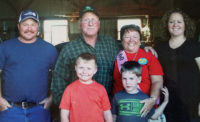Owens Corning has a unique safety-centric relationship with an art museum, the Toledo Museum of Art. Toledo is the home to Owens Corning, a $5.2 billion manufacturer of insulation, roofing and fiberglass composites with 17,000 employees in 33 countries.
So what can a manufacturer learn from an art museum and apply to safety? Two words: visual literacy.
The concept of being visually literate has been around for decades. Still, many if not most people are visually illiterate. The Toledo Museum of Art found that the average visitor spent an average of ten seconds in front of a painting before moving on. How much visual information can you absorb in ten seconds? That’s far from sufficient time to take in a painting’s colors, shapes, lines, textures, use of space, sense of balance, and sense of history and culture.
Ten seconds in front of a painting is skimming the surface, forming a quick yea or nay -- you like it or don’t -- and are ready to move on.
Familiarity misses hazards
The connection between visual literacy and safety has two important applications – with hazard recognition and incident investigation. Several years ago Owens Corning wanted to upgrade its employees’ ability to recognize hazards and investigate incidents. Some of the company’s major hazards involve slips and trips, working around industrial powered trucks and material handling. It’s easy for employees in any facility to become de-sensitized to hazards like these over time. Employees become habituated to their environment – the diminishing of a physiological or emotional response to a frequently repeated stimulus.
Many tasks on the shop floor are routines repeated perhaps hundreds of times a day. Employees can tune out annoying and potentially hazards stimuli such as noise, moving vehicles, spills, dangerous wiring and the grind of machinery. It becomes second nature to pick up the tools you need, or work on equipment, without checking for wear and tear or maintenance problems. The same goes for feeling fatigued, working at heights and regularly trekking across a cluttered, fast-moving workplace. You get used to it.
This habituation or complacency is the enemy of hazard recognition. It also comes into play when investigating incidents. It’s easy to make assumptions and rush to conclusions about how an incident happened because you’re familiar with the environs, the shortcuts taken for years, the basic hazards and “the way things are done around here.”
Overcoming biases & blind spots
In early 2015 Doug Pontsler, recently retired vice president of EHS and sustainability for Owens Corning, contacted the Toledo Museum of Art about a new visual literacy curriculum the museum had developed and used to train 300+ staff and volunteers. Could the museum’s curriculum be applied to hazard recognition and incident investigation? The museum’s visual literacy framework for overcoming biases, blind spots and gaining a fresh perspective involves six steps: look; observe; see; interpret; analyze; and describe. You look, observe and see in order to describe, analyze and interpret. To do this everyone needs to be speaking the same visual vocabulary, using the same terms and words. Otherwise, hazard descriptions, analyses, and interpretations of how incidents happen will vary all over the board.
Owens Corning now breaks down the visual assessment of an area in terms of key types of hazards and trains employees on perceiving these specific hazards, one at a time. Then they move on to the next visually identifiable hazard.
Employees learn important lessons:
- Sometimes you cannot see what is in front of you, even if you know it is there
- Once you really see something, it is impossible to “un-see” it and forget it
- You are always filling in the blanks, the missing pieces, what you don’t see, based on what you expect to be there.
A key point
A significant difference exists between looking and seeing. From the time we get up in the morning we look at everything around us. But how much do you remember about your drive to work? Seeing takes more effort. It requires awareness – when you see something you are aware that you’re using your eyes to lock in on it. There’s a thinking process involved.
The absence of critical thinking is the bane of safety professionals. To work safely requires thinking. To piece together how an incident happened requires thinking. It requires seeing, not just looking. When you say, “Oh, I can see right through that person,” you’re doing more than looking at them, you’re making a judgment, an interpretation, about the identity or motives of that person. Hazard recognition, behavioral observations, incident investigations, hazard hunts, walkaround audits, job safety (or hazard) analyses all require that deeper insight and perception.
The bottom line: slow it down. You see better when you’re not rushing. Take longer than ten seconds to study that painting. But here’s the challenge: slow is the enemy of safety because slow is the enemy of productivity -- getting product out the door, meeting quotas, satisfying the boss.
Businesses don’t want to go slow. Books are written explaining how to accelerate processes to beat the competition. Authority to stop the line is prized in safety. But how often does it happen? Stoppages and slowing down are something of an anathema to production-pressured, harried supervisors, managers and execs. But as Owens Corning and other companies are learning, it’s critical to slow down and take in the stimuli, hazards, at-risk behaviors. Get thought processes going and describe what you see, analyze what you see, and then communicate your interpretation to others using operationally-defined words, a vocabulary everyone has been trained on. This is safety: slowing down and thinking it out. There will be resistance. It’s never been easy for safety to pull off, and never will be. But there’s no safe alternative.



